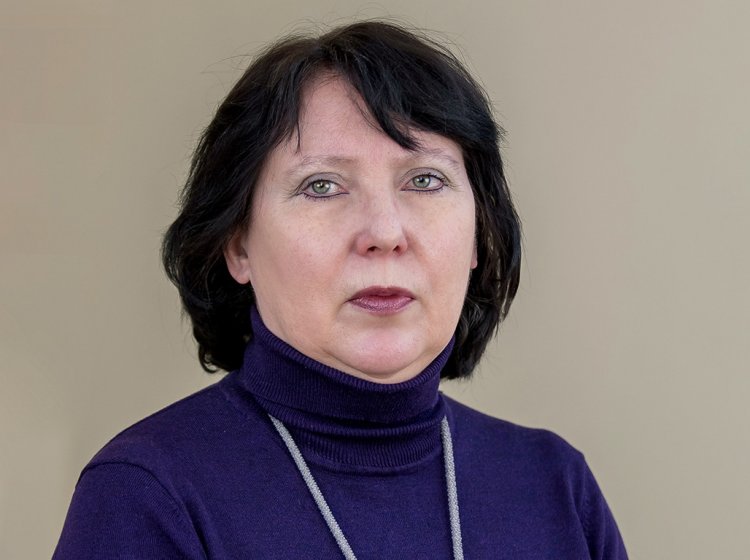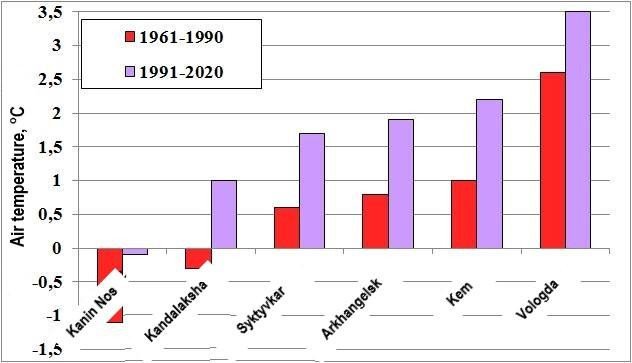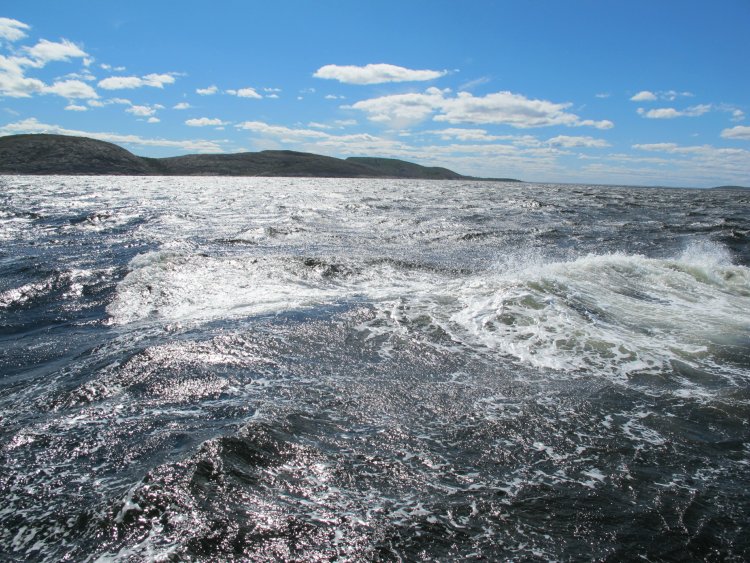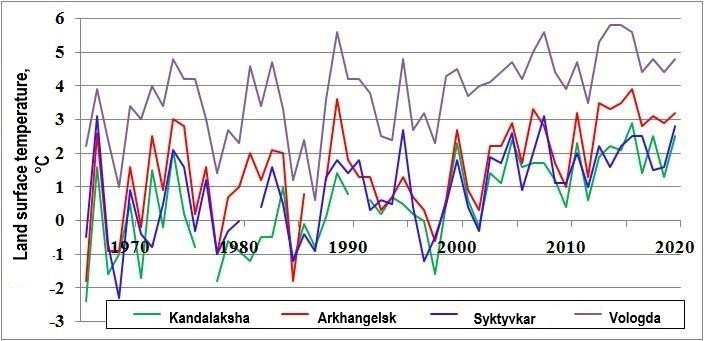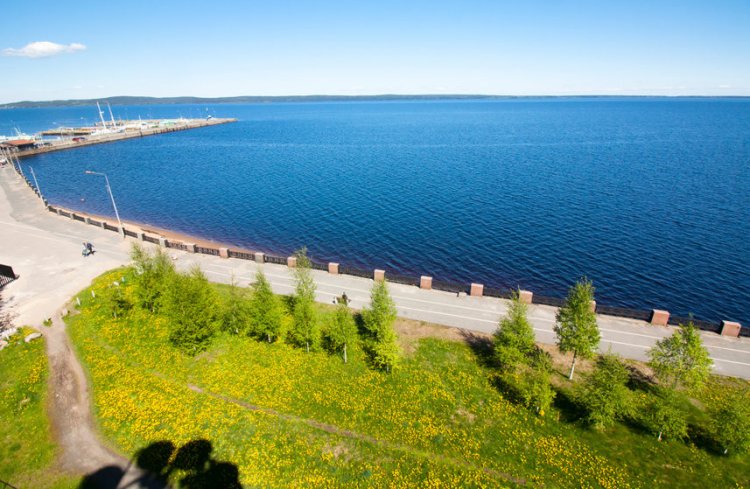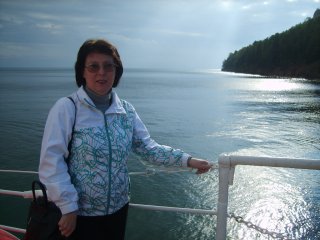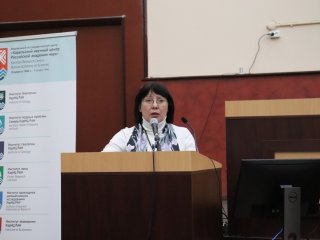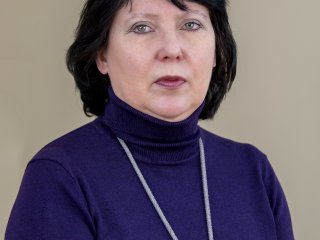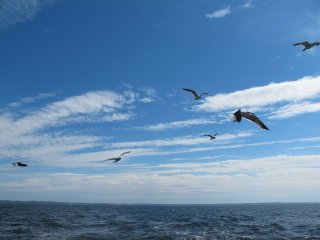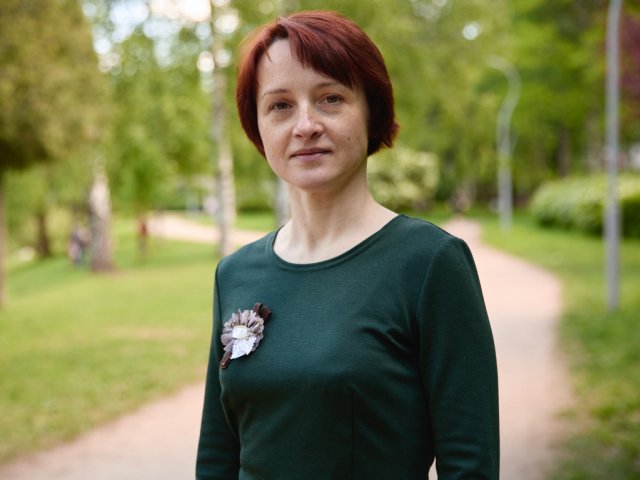Air and soil temperatures, as well as precipitation rates and the number of thawing degree-days, have increased significantly in the White Sea catchment area over the past 30 years. In her interview, Candidate of Geographical Sciences and Head of the Northern Water Problems Institute at the Karelian Research Center of the Russian Academy of Sciences (KarRC RAS) Larisa Evgenyevna Nazarova discusses climate change in the White Sea region and her research on Northern waters.
— Your recent research has revealed a significant increase in air temperature in the White Sea catchment area between 1991 and 2020, whereas the preceding 60 years would only be marked by some minor changes in climate normals. Please tell us more about this.
— The White Sea is significantly influenced by the condition of its catchment area and since our institute studies North waters, we could not ignore this matter. The White Sea catchment area is huge: about 720 thousand square kilometers. This includes several administrative regions, including the Republic of Karelia and part of the Komi Republic. What does the White Sea catchment area mean? This is part of the earth's surface, including soil and subsoil, from where water flows into the White Sea.
In our research, we use observational data from weather stations, that is, the system of the Federal Service for Hydrometeorology and Environmental Monitoring (Roshydromet). This information is accurate and reliable. Many weather stations have been carrying out observations for more than a century, and some of them have been in operation for even longer: for example, the Arkhangelsk weather station has been monitoring weather conditions since the 19th century.
Indeed, there have been significant changes in air temperature in the White Sea catchment area over the past 30 years. Increased average annual temperatures are found all over the area.
In climatology, averages are normally calculated for a 30-year period. These periods are determined in accordance with the World Meteorological Organization and are strictly fixed for all weather stations in the world. Another period has ended recently, that is the period of 1991-2020.
We found out that, according to the observations from almost all weather stations, annual air temperature increased by about 1.5 degree. This is a lot. Temperature fluctuations used to amount to tenths of a degree during the previous 60 years and now there is a whole degree and a half!
Average annual air temperature according to the data from weather stations in the periods of 1961–1990 and 1991–2020. The image is provided by L. E. Nazarova.
Overall, temperature changes were not unidirectional during the 20th century and at the beginning of the 19th century. It means that air temperatures did not increase all the time, but there were periodic decreases, too. For example, the 1930s of the past century were very warm. From the 1950s to the 1970s, air temperature was, on the contrary, lower: we observed a sort of a cold spell. We have been registering warming since about the end of the 1980s, and this warming is unidirectional: temperature does not decrease at all, there are only temperature rises. We have been observing such a unidirectional increase in temperature for 30 years now; therefore, we have reason to believe it is not climate variability but climate change.
— Please describe in more detail the difference between climate variability and climate change.
— In climatology, we distinguish “variability,” “fluctuations” and “change.” When we speak about variability, we imply climatic processes that last for less than 30 years, during which an increase is replaced by a decrease and so there is no unidirectional process. If certain climatic processes are observed for more than 30 years in a row and are not unidirectional, we deal with climate fluctuations. If we see a significant increase or decrease in a particular climatic aspect that lasts for more than 30 years, this is a unidirectional process and, in this case, we deal with climate change.
It is noteworthy that climate change can manifest itself in an uneven manner throughout the year. For example, the highest temperature rise here is observed in winter months, especially in January. January has become warmer by approximately two or three degrees on average over a 30-year period all throughout the White Sea catchment area. I'm talking about mean temperature values for a 30-year period here, not about a single year that can be cool or warm in winter and hot or cold in summer.
Russia’s White Sea does not share borders with the waters of other states. The sea is ice-covered for more than six months. The Mezen, Onega, Northern Dvina, and many other rivers flow into the White Sea. Photo: A. V. Tolstikov, KarRC RAS.
— When we talk about a two or three-degree temperature rise, does this relate to air temperature? Or, does the water in the White Sea get warmer, too?
— No, it is not about water temperature. Climate is the state of the meteorological component of a very complex system; meteorology is about the atmosphere rather than water. The main focus area of our institute is the study of water but since I’m a climatologist, I am talking about the atmosphere and climate here. There is a temperature rise in the White Sea catchment area in summer, but it is not as pronounced as in winter. Moreover, the number of thawing degree-days is increased across the area in the winter months. What is a thaw from our perspective? A thaw is observed when air temperature rises above zero during the day within at least one of the eight periods of meteorological observations. Approximately the same situation is observed with soil temperature: it also increases, and even more significantly than air temperature. Soil freezing is reduced. Earlier, the soil used to freeze at a depth of 20 centimeters in the Petrozavodsk region; this was a fixed period. However, negative soil temperatures at a depth of 20 centimeters have hardly been registered during the past 15 years. What are the consequences of this? Winter runoff increases, which leads to a higher inflow of allochthonous substances from the catchment area to water bodies.
Average annual land surface temperatures, °C, 1966–2020. The image is provided by L. E. Nazarova
— What about atmospheric precipitation?
— We observe interesting processes in this context, too. In addition to changes in air and soil temperatures, the precipitation regime changes across the entire White Sea catchment, and this phenomenon is more pronounced in the northern territories: Murmansk Region, Karelia, Arkhangelsk, and some areas of the Komi Republic. These processes are less pronounced in Vologda Region, that is, the south of the White Sea catchment area. When comparing the average 30-year value with the previous climatic normal, we register an increase in annual precipitation by about 80 millimeters, which is quite a lot. This increase in precipitation is observed during all four seasons of the year. In addition, both the share and time series of solid precipitation reduce across the area. The share of mixed precipitation is increased significantly in winter.
— How do you explain these climate changes?
— You need to clearly understand that the climate system is very complex. It comprises direct, indirect, and inverse relationships. Climate change is a multifactorial process, and there are different hypotheses about the major contributing factor. It would be arguably wrong to claim any of these hypotheses is true. The main hypotheses about climate change can be divided into three groups: space, astronomical and geophysical. The adherents of space hypotheses believe that processes occurring on the Sun play a decisive role in climate change. In addition, some scientists contend that the relationship between solar activity and the temperature of our air is direct, while others insist there is a periodic correlation only. In their turn, astronomical hypotheses link climate change with the parameters of Earth's orbit: changes in Earth's axial tilt (the so-called Milankovitch cycles) and other parameters. Of course, such processes as changes in Earth's axial tilt do take place but I believe they cannot fully explain the climate problem. After all, these processes take a longer time, and climate change takes place right before our eyes: in this case, we are talking about a 30-year period.
Now we come down to geophysical hypotheses. What is included in these hypotheses? They comprise volcanic activity, aerosol emissions in the atmosphere, changes in the land-sea ratio as well as changes in the sea level, atmospheric gas pollution, and the influence of the World Ocean. The anthropogenic impact is worth mentioning as a factor that cannot be ignored either.
My personal opinion is that whereas the anthropogenic factor is, beyond any doubt, very important and has a serious impact, its impact is more local. For example, if people cut down trees in some area, change river courses or drain swamps, it may change the climate of this region. However, it will still be a matter of local rather than global climate change. As to climate change here in Karelia. I mainly associate it with the reorganization of global atmospheric circulation and the intensification of western disturbances.
— What is it?
— The path of cyclones from the Atlantic runs over Karelia. When formed, these cyclones absorb quite warm and humid Atlantic air and bring us thaws in winter and cloudy and rainy weather in summer. When the transfer of air masses from the Atlantic intensifies, we observe this very type of weather: cloudy, with precipitation, maybe windy, cool in summer, and relatively warm in winter. In addition to western disturbances, air masses formed over the Arctic play an important role in the formation of the climatic conditions in Karelia. Arctic anticyclones bring severe frosts in clear sunny weather in winter but we have not seen much of them recently.
— If it is all about the transfer of air masses, temperature should periodically change, but, in reality, it only keeps rising.
— The point is that climate change is a very multifactorial and multidimensional process, and it is quite possible that one factor is intertwined with another one: for example, the transfer of air masses from the Atlantic and the decrease in the world’s volcanic activity. A powerful volcano can actually spoil weather for several years over areas as large as hemispheres. Volcanoes emit a lot of aerosol and greenhouse gases into the air, which reduces the transparency of the atmosphere and changes its other parameters. Thus, the impact of solar activity remains relevant. If we put all the above-mentioned factors together, we can probably get just the kind of a climate change effect that we are observing. If someone manages to explain with absolute certainty why our climate gets warmer, even the Nobel Prize will not be enough to celebrate this discovery. However, I have not met such people so far. Everyone defends their own theory.
— You associate local manifestations of climate change with anthropogenic impact. What about climate change in the White Sea catchment area, is this process local or not?
— Of course not! As I have already said, the White Sea catchment area is 720 square kilometers, and it is far too much for a local territory. In fact, it is a large part of northwest Russia where certain global processes take place. As for anthropogenic impact, humans need to try hard to change the climate in such a vast area. There are not enough people in this region to provoke such changes with their activities.
— How have climate changes registered over the past 30 years affected the inhabitants of the White Sea?
— The White Sea is deep: the maximum depth is over 340 meters, and the average depth is approximately 67 meters. It is not easy to heat up its deep parts. We have information about temperature rises only in the surface layers of the White Sea. Our Lake Onega is many times smaller, but it heats up at the surface only. We do not register any strong changes at great depth. Nevertheless, changes in the species composition of fish communities have already been registered in small Karelian lakes that warm better: the amount of cold-water fish has decreased since it has become uncomfortable for them to live in warm conditions, whereas the share of warm-water fish has increased. These processes have not yet manifested themselves in Lake Onega, but we observe them clearly in small water bodies.
Lake Onega — the source of drinking water for several Russian regions.
Photo: elenanoeva / 123RF
— Please tell us about research carried out at KarRC RAS.
— Our institute has five laboratories: Laboratory of Geography and Hydrology, Laboratory of Hydrophysics, Laboratory of Hydrobiology, Laboratory of Hydrochemistry and Hydrogeology, and Laboratory of Bottom Sediments Research. The Laboratory of Geography and Hydrology is specifically engaged in studies of the White Sea catchment area and complex studies of lake-river systems. The Laboratory of Hydrochemistry controls the chemical composition and pollution of water bodies and studies the formation of the chemical composition of surface and ground waters. A new interesting topic has recently appeared in their research program, that is, microplastics in water bodies. This topic has never been studied in Karelia before. We have already obtained very interesting results. For example, our researchers have recently discovered that the Gmelinoides fasciatus Baikal amphipods living in Lake Onega can eat microplastics.
— What happens to these organisms after they eat such a “delicacy”?
— These crustaceans can eat one piece of microplastics in their lifetime. You can read more about this in our scientists' article on this matter.
Interesting scientific research is carried out by other laboratories as well. For example, the Laboratory of Hydrophysics is engaged in fundamental research analyzing physical processes in lakes, including ice-covered lakes. Our hydrobiologists study the structural and functional organization and evolution of aquatic ecosystem communities. We have a laboratory that studies bottom sediments in lakes and their formation conditions. Very interesting results have also been obtained in this field.
— We have discussed the White Sea. Finally, please tell us about Lake Onega, the signature landmark of Karelia and the second-largest freshwater body in Europe. What is its current state?
— Overall, Lake Onega is in good condition, especially its central part. Water is still very clean. Sometimes it is compared with Baikal water. Here, however, we flatter ourselves: Baikal water is more transparent.
The state of Lake Onega is good, except for a few bays, for example, the Petrozavodsk Bay, on the bank of which the entire same-name city actually stands. Storm sewer drains are discharged into the bay, and sewage treatment plants are ineffective.
There are also problems in the Kondopoga Bay where a pulp and paper mill operates. The activities of the pulp and paper mill have created a “dead zone” in the ecosystem of the bay: there are no benthic animals in the area of wastewater discharge.
Another problem in our region is trout farms. The world trend in the Scandinavian countries and North America is to transfer cage farms to marine areas. These countries have abandoned the practice of setting up trout farms in freshwater bodies, as the water exchange rate in northern lakes is very slow, and there are no tides; as a result, all fish waste products and uneaten food settle to the bottom of lakes poisoning them. However, trout farms still operate on Karelian lakes. We try to draw attention to this problem, but financial interests prevail: this production is quite profitable. Overall, trout farming has become a Karelian brand, and it is a very good business, but it should be organized differently. Ideally, it should be transferred to the White Sea. This approach is not a new thing in the world. Trout farms based in marine areas have been successfully operating for a long time, for example, in Norway. In addition, to minimize damage to freshwater ecosystems, the member states of the European Union introduce new technologies, such as recirculating aquaculture systems with a near-closed water cycle that is beneficial for the disposal of waste from fish farming. However, these measures require large investments. Karelia cannot make this kind of display at the moment, but I hope we will adopt more efficient ways of organizing trout farms sooner or later.
Photos: KarRC RAS.
